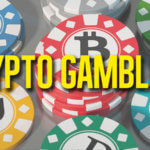Published on: 16/05/2022
NFT: Why gamers despise it and what might make them reconsider
There appears to be hostility towards NFTs and blockchain-based games. A video game company can face a 140-character backlash on social media just for announcing that they are experimenting with NFTs. Gamers’ passions and emotions often change, and the source of their hate for NFTs should be investigated.
NFTs mean money
There are some unspoken rules in the gaming community:
– Initial purchases of content should include access to the majority of the experience.
– Essential commodities must not be tied to microtransactions.
– Games should not include tedious and repetitive gameplay designs just to avoid microtransactions.
Prior to the advent of virtual slot machines, gamers spent their money to gain status and identity in the virtual world. Gold purchases from third-party vendors in World of Warcraft were so quick to dominate the scene that Blizzard developed a WoW token that enabled players to exchange real money for in-game currency.
The idea of integrating hard currency into massively multiplayer online role-playing games (MMORPGs) is not new. That being said, developers should be careful in integrating real-life money into gaming mechanics. For example, Roblox has been hit by several scandals related to the rampant abuse of third-party game development.
The use of NFTs in gaming has never been more essential. The key to adding value to gaming with NFTs is to make the base game truly engaging and collaborative, allowing people to feel challenged and freely involved and form communities. The majority of games have never been a “pure” experience free of economics, with the exception of early indie open-source games.
The game World of Warcraft, for instance, used a variety of psychological tactics to lure players in. It is likely that players will try to sell their World of Warcraft accounts for real money when they eventually leave. When a gamer’s work results in actual currency, it adds to the experience.
Enhancing gameplay and gaming status with NFTs
As a tool for verifying ownership, NFTs fulfill a fundamental necessity and pleasure for collection and positioning. Just like any other instrument, however, players can use NFTs for both good and bad purposes. In order to provide a meaningful gaming experience to players, game developers must develop games that offer lucrative opportunities to earn NFTs that reinforce and enhance the gaming experience.
Technology such as AR+VR opens new doors for gamers to wear their NFT items in the physical and digital worlds. NFT and Metaverse Avatar’s interoperability is growing rapidly, allowing users to experience gameplay on the platform.
The art of storytelling in the gaming world is evolving towards an immersive and interactive experience.
As part of the Metaverse platform, The Sandbox developers are creating an NFT ecosystem for transforming game components (art, game mechanics, and animations) into NFTs, making it easier for players to design games and immersive worlds. The idea of bridging games and NFTs is certainly feasible.
As with the entire NFT industry, the next chapter of NFT-based gaming is currently being written. Limitless possibilities for creative disruption and responsible value creation are ahead.
-
Esports // 2022-05-16
PUBG Mobile hits over $7 billion in player spending



